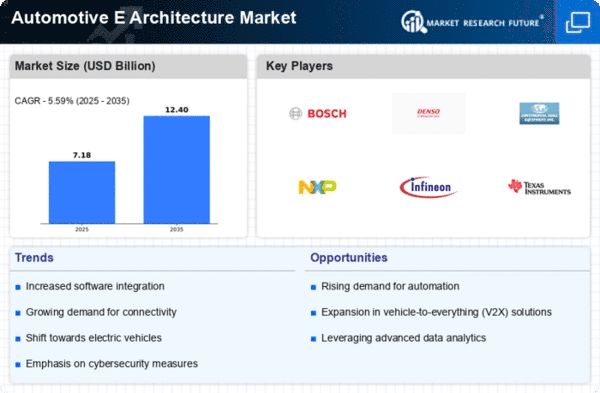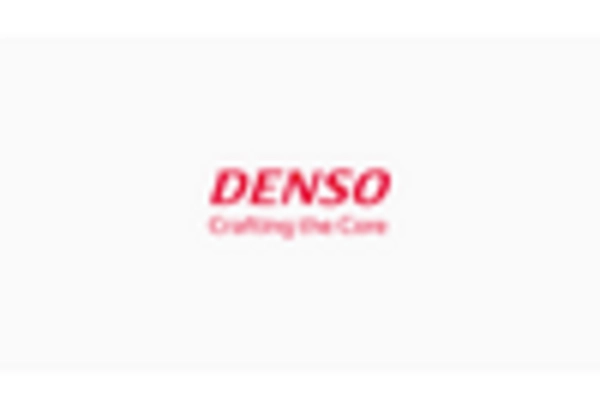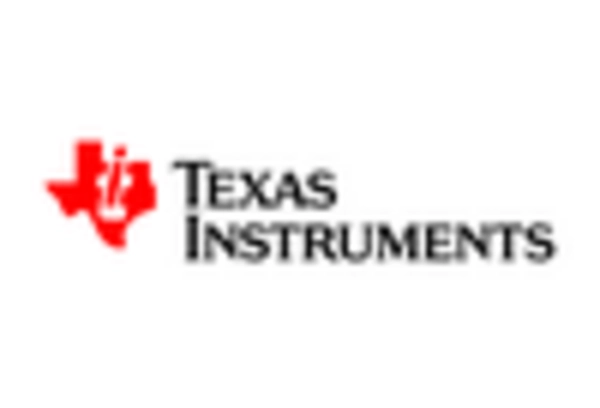The Automotive E Architecture Market is currently characterized by a dynamic competitive landscape, driven by rapid technological advancements and increasing demand for electric and autonomous vehicles. Key players such as Robert Bosch GmbH (DE), Denso Corporation (JP), and Continental AG (DE) are strategically positioned to leverage innovation and partnerships to enhance their market presence. Robert Bosch GmbH (DE) focuses on integrating advanced driver-assistance systems (ADAS) into their offerings, while Denso Corporation (JP) emphasizes the development of energy-efficient components. Continental AG (DE) is actively pursuing digital transformation initiatives, which collectively shape a competitive environment that prioritizes technological sophistication and sustainability.
In terms of business tactics, companies are increasingly localizing manufacturing and optimizing supply chains to enhance operational efficiency. The market structure appears moderately fragmented, with a mix of established players and emerging entrants. The collective influence of these key players fosters a competitive atmosphere where innovation and strategic collaborations are paramount.
In November 2025, Denso Corporation (JP) announced a partnership with a leading software firm to develop AI-driven solutions for vehicle connectivity. This strategic move is likely to enhance Denso's capabilities in smart mobility, positioning the company to better meet the evolving demands of the automotive sector. The integration of AI technologies into their product offerings may provide a competitive edge in a market that increasingly values connectivity and automation.
In October 2025, Continental AG (DE) unveiled a new modular E architecture platform designed to support a wide range of vehicle types, from conventional to electric. This initiative reflects Continental's commitment to innovation and adaptability, allowing for greater flexibility in vehicle design and functionality. The introduction of such a platform could potentially streamline production processes and reduce time-to-market for new models, thereby enhancing Continental's competitive positioning.
In September 2025, Infineon Technologies AG (DE) expanded its semiconductor manufacturing capabilities in response to the growing demand for automotive electronics. This expansion is indicative of Infineon's strategy to strengthen its supply chain resilience and meet the increasing needs of the automotive industry. By enhancing its production capacity, Infineon is likely to solidify its role as a key supplier in the Automotive E Architecture Market.
As of December 2025, current trends in the Automotive E Architecture Market are heavily influenced by digitalization, sustainability, and the integration of AI technologies. Strategic alliances among key players are shaping the competitive landscape, fostering innovation and collaboration. The shift from price-based competition to a focus on technological advancement and supply chain reliability is evident. Moving forward, competitive differentiation will likely hinge on the ability to innovate and adapt to the rapidly changing demands of the automotive sector.
















Leave a Comment